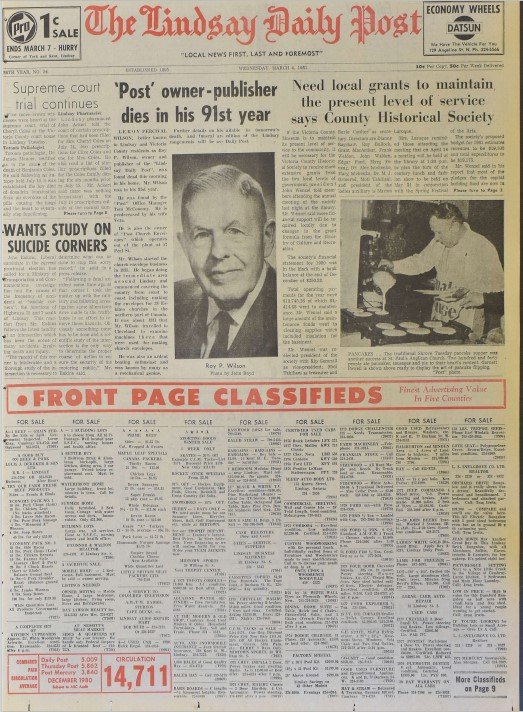

Table of Contents
-
As we delve into the rich history of the Lindsay Post, we uncover an outstanding narrative of journalistic resilience, community engagement, and the enduring significance of this small town paper.
-
Established as the Canadian Post in 1857, this newspaper’s journey through time saw it transform into various names and supplementary publications before emerging as the Post that is remembered today.
-
At the heart of Lindsay, a town woven into the fabric of Ontario’s history, stands a newspaper that has not only chronicled the passage of time but has also played an integral role in shaping the town’s identity. The story of the publication now known as the Lindsay Post is one of evolution and adaptation, reflective of the community it has served for over a century.
-
Roy Wilson, a name synonymous with the Post, emerged as a prominent figure with a legacy deeply entwined with his father’s heritage. Eventually, Roy stepped into the role of publisher with a determination to leave an indelible mark of his own.
-
The printing press was a marvel of its time, a mechanical symphony that brought news to life in the pages of newspapers. In a time before digital technology and modern printing methods, these presses were the workhorses of the publishing industry.
-
Alan Roy Capon (1932-2014) left an enduring legacy during his tenure at the Lindsay Daily Post, under the guidance of publisher Roy Wilson. Arriving in Canada from England as a young man, he dedicated his life to the newspaper industry.
-
Alan Capon’s tenure with the Post, spanning from 1963 to 1970, showcased his invaluable contributions to the newspaper industry. While he may not have been explicitly credited as the author of many articles within the paper’s issues, his role within its operations was significant.
-
This timeline highlights significant events and achievements in the life and times of Alan Capon (1932-2014).
-
Organizations stand as pillars of connection and progress for a small town. They play a pivotal role in fostering a sense of solidarity among residents, and for a journalist like Alan Capon during his tenure with the Post, they represented not only subjects of his lens but also fellow group members.
-
Before the establishment of Branch 67 of the Royal Canadian Legion, the town was home to the Great War Veterans’ Association. Beginning in 1917, the organization offered assistance with veterans’ reintegration into civilian life, healthcare, pensions, and employment opportunities. It also played a role in helping veterans navigate the challenges of post-war life, including physical and psychological trauma.
-
In a small community, celebrations and events hold a unique significance that extends beyond mere moments of amusement. Among those who recognized the importance of these occasions was editor Alan Capon, whose lens bore witness to some of the most memorable events that Lindsay residents attended.
-
By 1970, Alan had moved to the Peterborough Examiner newspaper as a bureau reporter, and then to the Kingston Whig-Standard in 1971. He continued with the Whig for 20 years, with the exception of a three year period in which he became the managing editor of the Picton Gazette, during its ownership by Joe Cembal.
